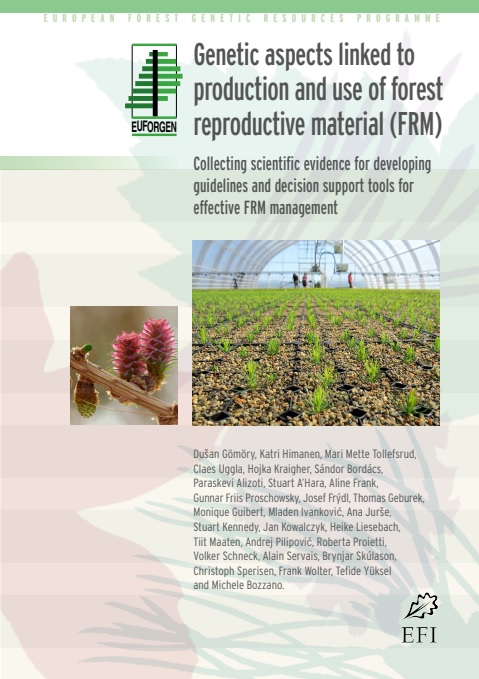Genetic aspects linked to production and use of FRM
The Forestry and Game Management Research Institute has been actively involved in the activities of the EUFORGEN program for a long time. As part of this program activities, the results and scientific findings obtained in the course of solution of research projects and scientific activities being supported by the EUFORGEN program, or which this program is directly involved in, are published in the form of this program publication activities. The results of these activities, including publication outputs, are available on the program website (https://www.euforgen.org/).
In connection with the program activities implemented as part of research into ongoing environmental changes, to verify the adaptability of forest tree species to the negative consequences of these changes, and to ensure the permanent sustainability of current and future forest ecosystems, the research is also aimed at updating knowledge about the genetically determined characteristics of the reproductive material of forest tree species (FRM).
One of the last published outputs of this focus is the publication of professional scientific work entitled Genetic aspects linked to production and use of forest reproductive material (FRM): Collecting scientific evidence for developing guidelines and decision support tools for effective FRM management (Gömöry et al., 2020).
For more information, see the preface of the EUFORGEN program coordinator (Dr. Michele Bozzano) to this publication. Related previously published work on this topic, as well as the work commented on in this update, can be downloaded as a pdf file here and here.
 PREFACE
PREFACE
The genetic makeup of Forest Reproductive Material (FRM) is directly affected by the decisions made by the various actors involved in its production chain. These decisions, which often ignore the genetic perspective, have a major impact on the survival of future forests.
There are still gaps and uncertainties in the current body of knowledge on the matter, such as which FRM should be recommended for a given site and what the adaptive potential of forest tree populations will be. This makes it difficult to prepare detailed guidelines for the production and use of FRM. These gaps are being partly addressed by ongoing research, which is generating scientific evidence to reinforce the development of decision support tools for assisting in the production and use of FGR.
In November 2015, the EUFORGEN Steering Committee established a working group to unpack these research efforts and identify the genetic aspects in each link of the chain for the production and use of Forest Genetic Resources (FGR).
The working group reviewed relevant literature and capitalised on the results of a previous EUFORGEN Network, known as the Forest Management network, which was active from 2005 to 2009. The group also built upon the publication Use and transfer of forest reproductive material in Europe in the context of climate change (Konnert M. et al. 2015).
Furthermore, the working group integrated the discussion points derived from the GenTree3 stakeholders’ consultation which took place in Madrid (Spain) in October 2016. The working group met three times: in November 2016 (Madrid, Spain), June 2017 (Warsaw, Poland) and November 2017 (Rome, Italy).
During the 13th Steering Committee meeting (June 2018), the draft report was presented along with recommendations stemming from it for specific target groups. An extended circle of experts from EUFORGEN community then received the document for peer review. Finally, a Task Force (Katri Himanen (Finland), Paraskevi Alizoti (Greece) Sándor Bordács (Hungary), Mari Mette Tollefsrud (Norway), Dušan Gömöry (Slovakia), Hojka Kraigher (Slovenia) and Claes Uggla (Sweden) reorganised the report in November 2018 (Oslo, Norway) and developed its first draft. In 2019 Silvio Oggioni, as a member of the EUFORGEN Secretariat, contributed to the coordination and the finalisation of this report. Several rounds of peer reviewing within the EUFORGEN community followed until June 2020.
Published work Genetic aspects linked to production and use of forest reproductive material (FRM): Collecting scientific evidence for developing guidelines and decision support tools for effective FRM management (Gömöry et al., 2021), it is the result of an international collaboration rooted in EUFORGEN for more than two decades. It is built on the firm belief that the genetic element is decisive for the creation of a resilient forest capable of surviving threats and adapting to changes, thus enabling the evolution of ecosystems and the conservation of the productive landscape.
Michele Bozzano, EUFORGEN Coordinator, December 2020
